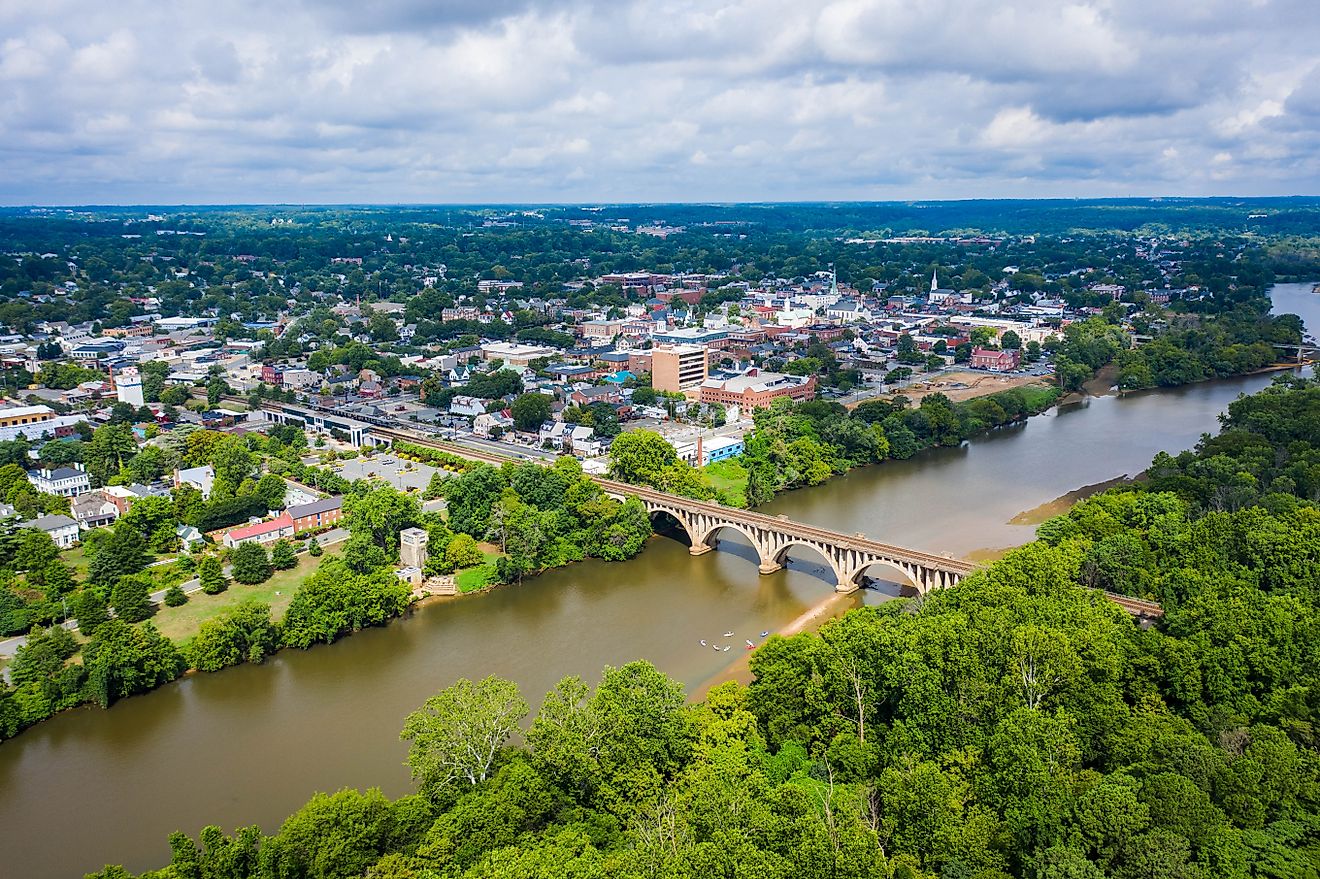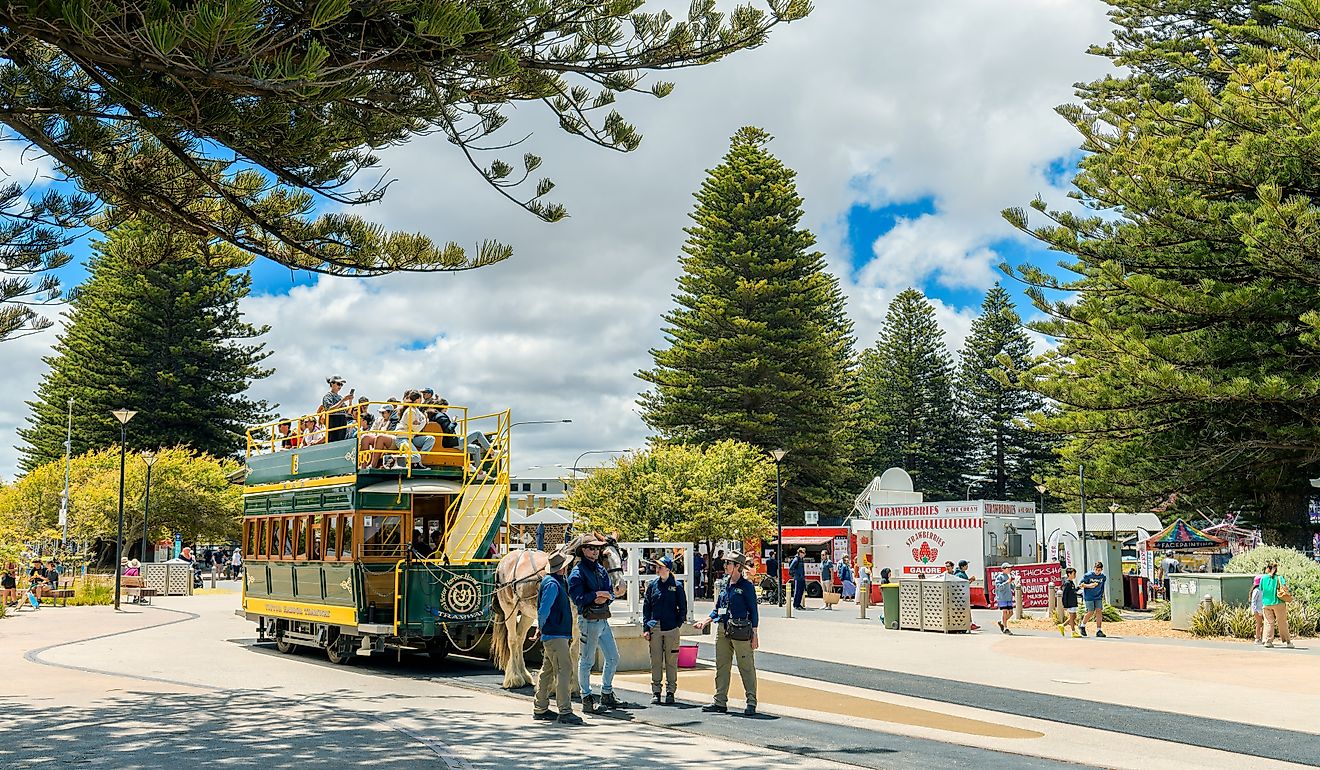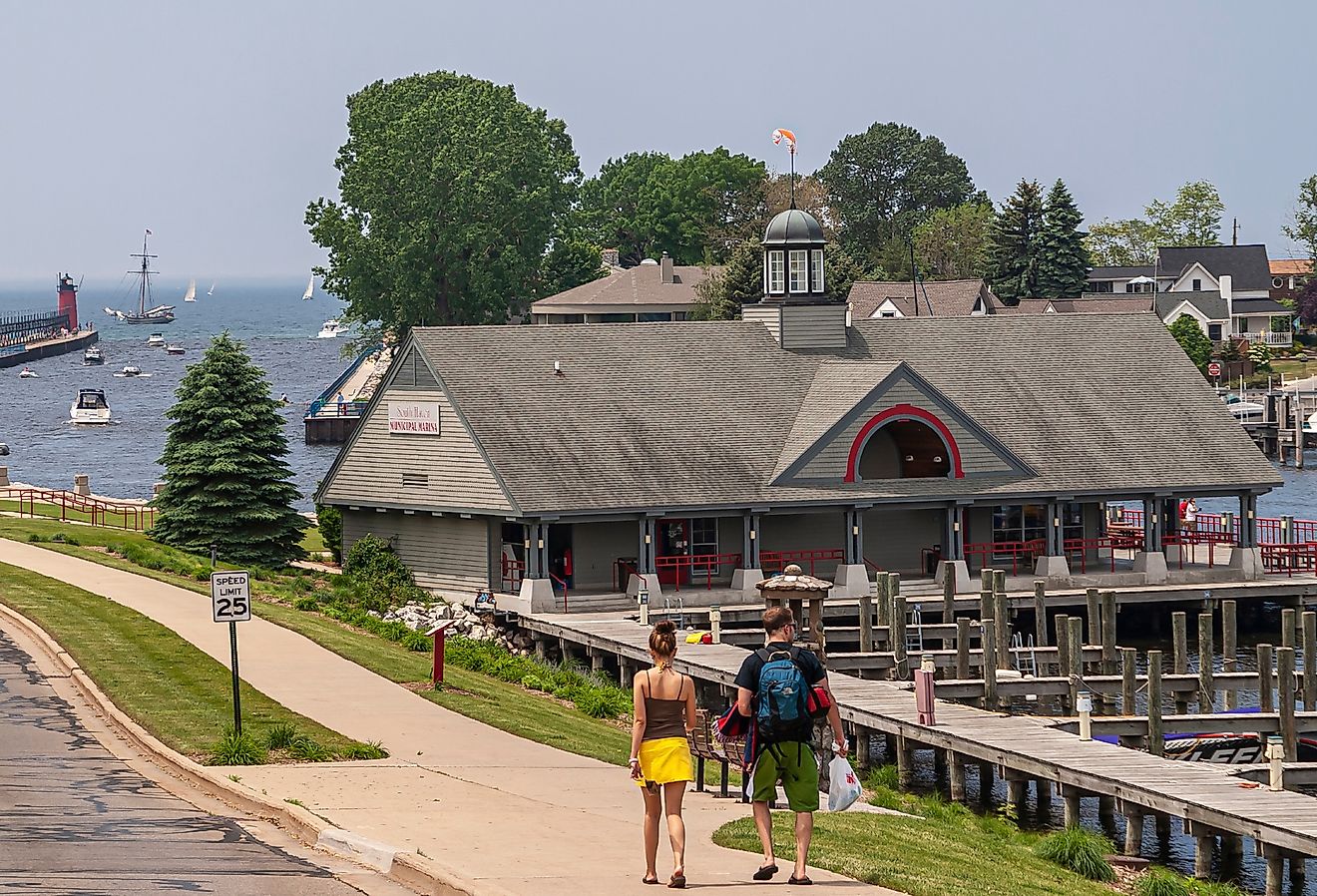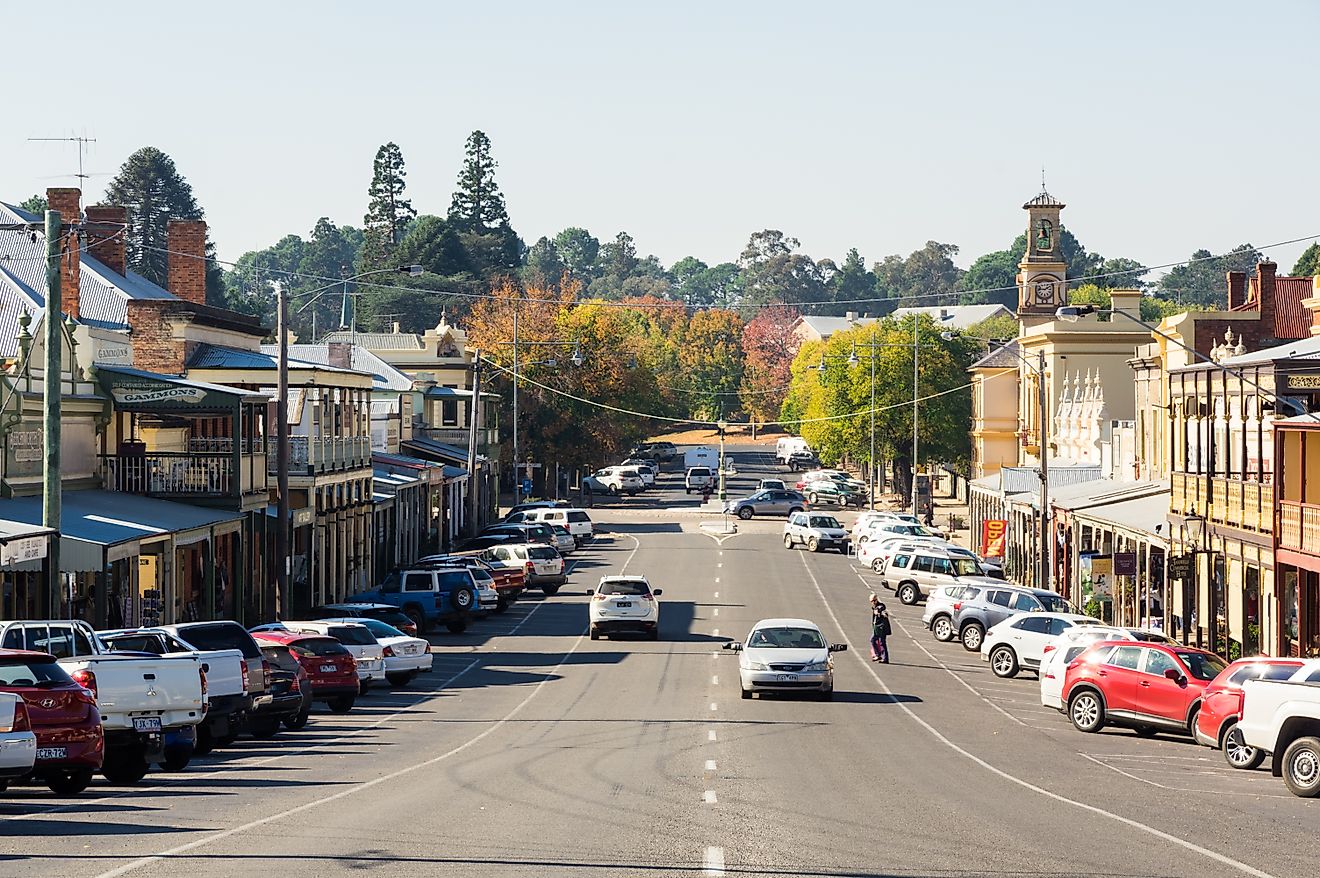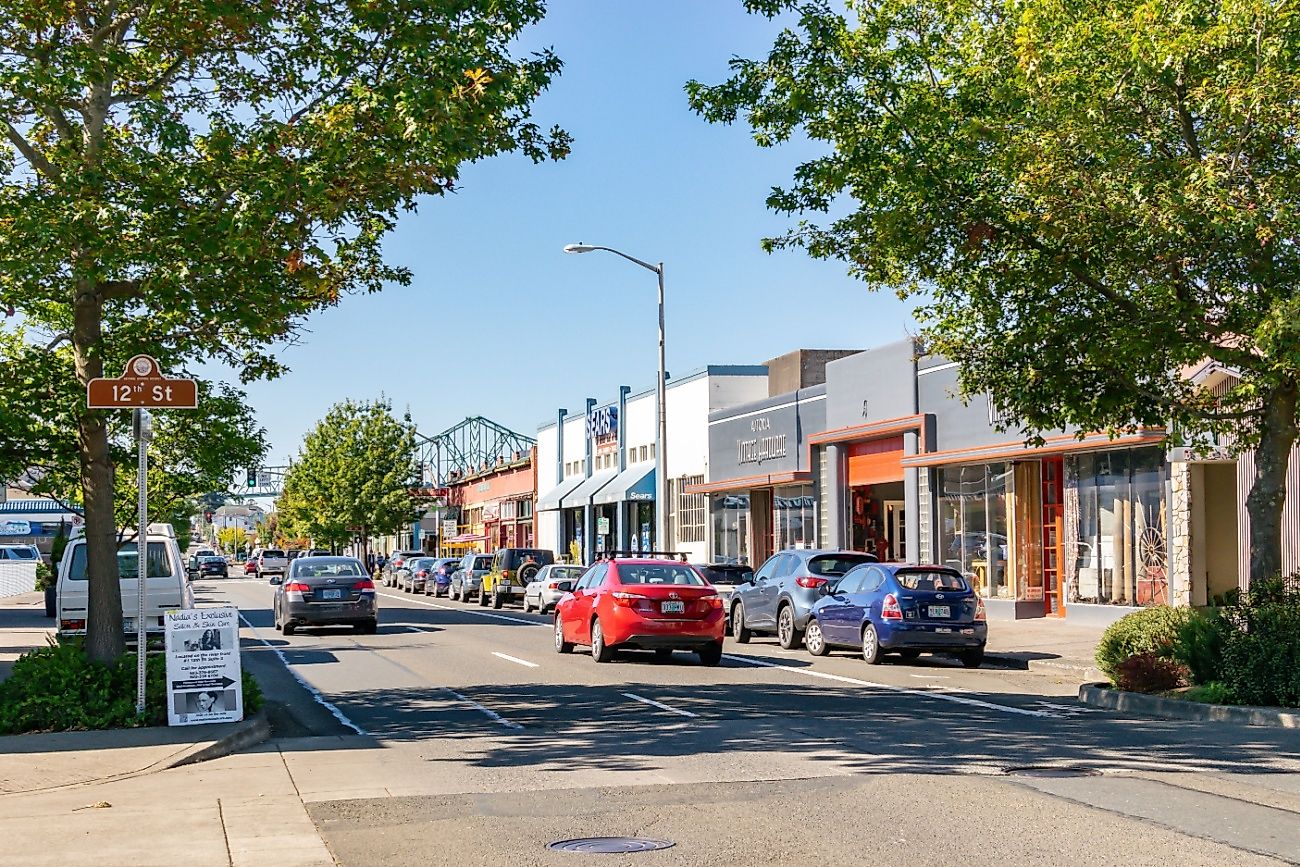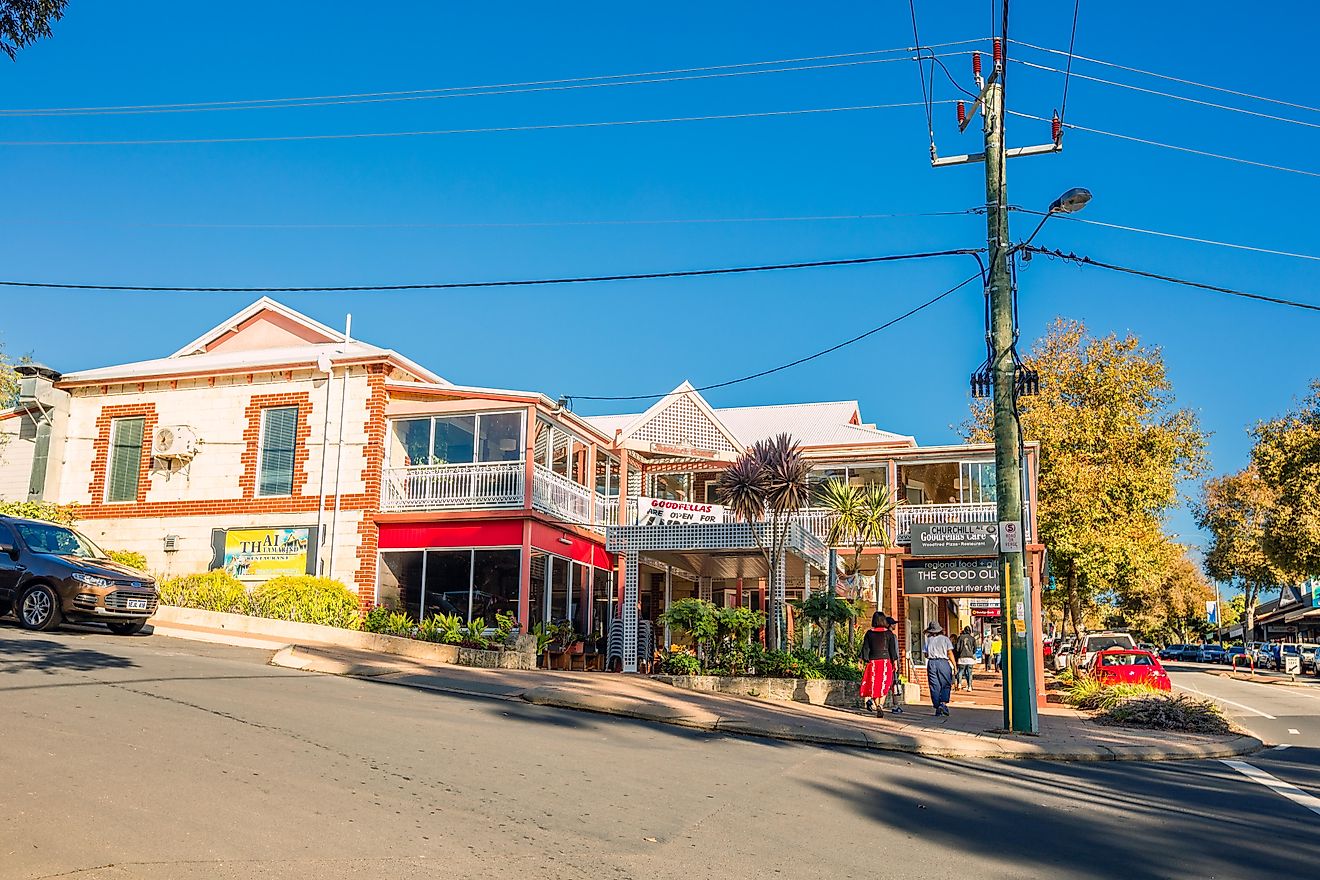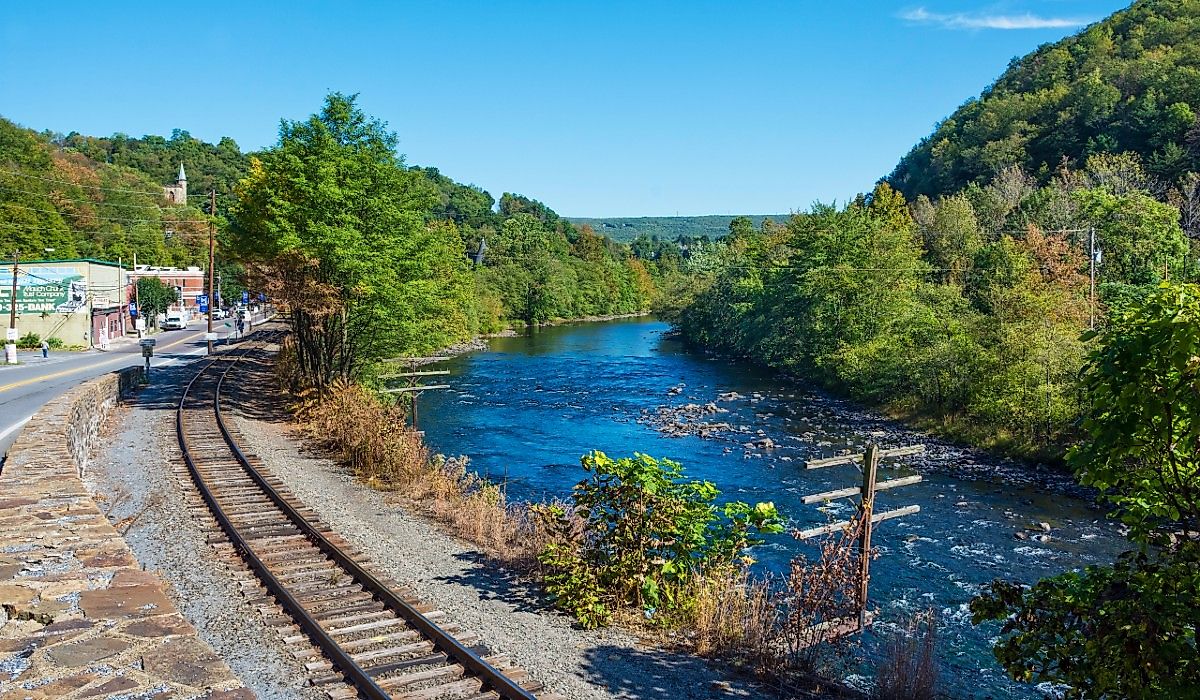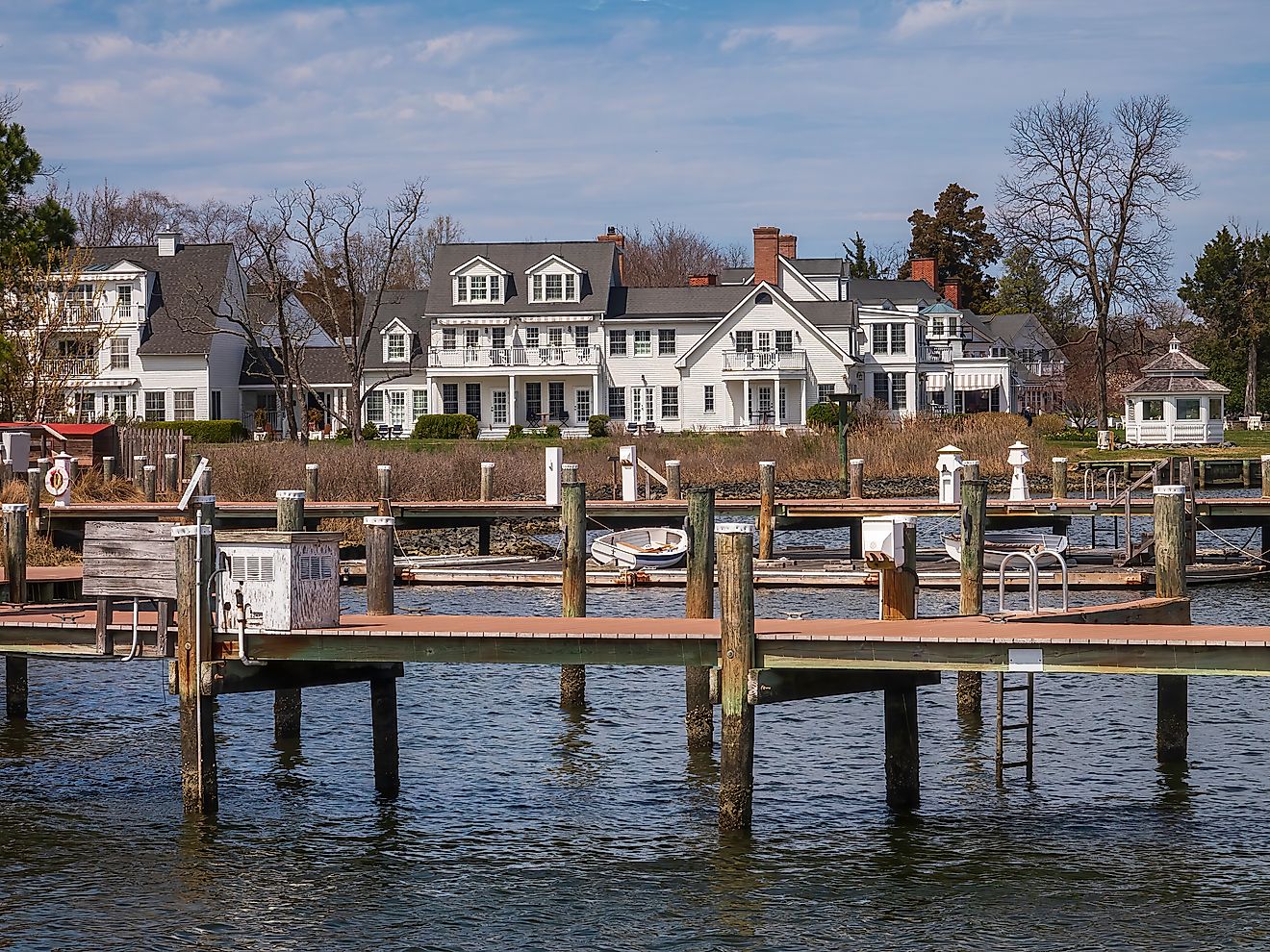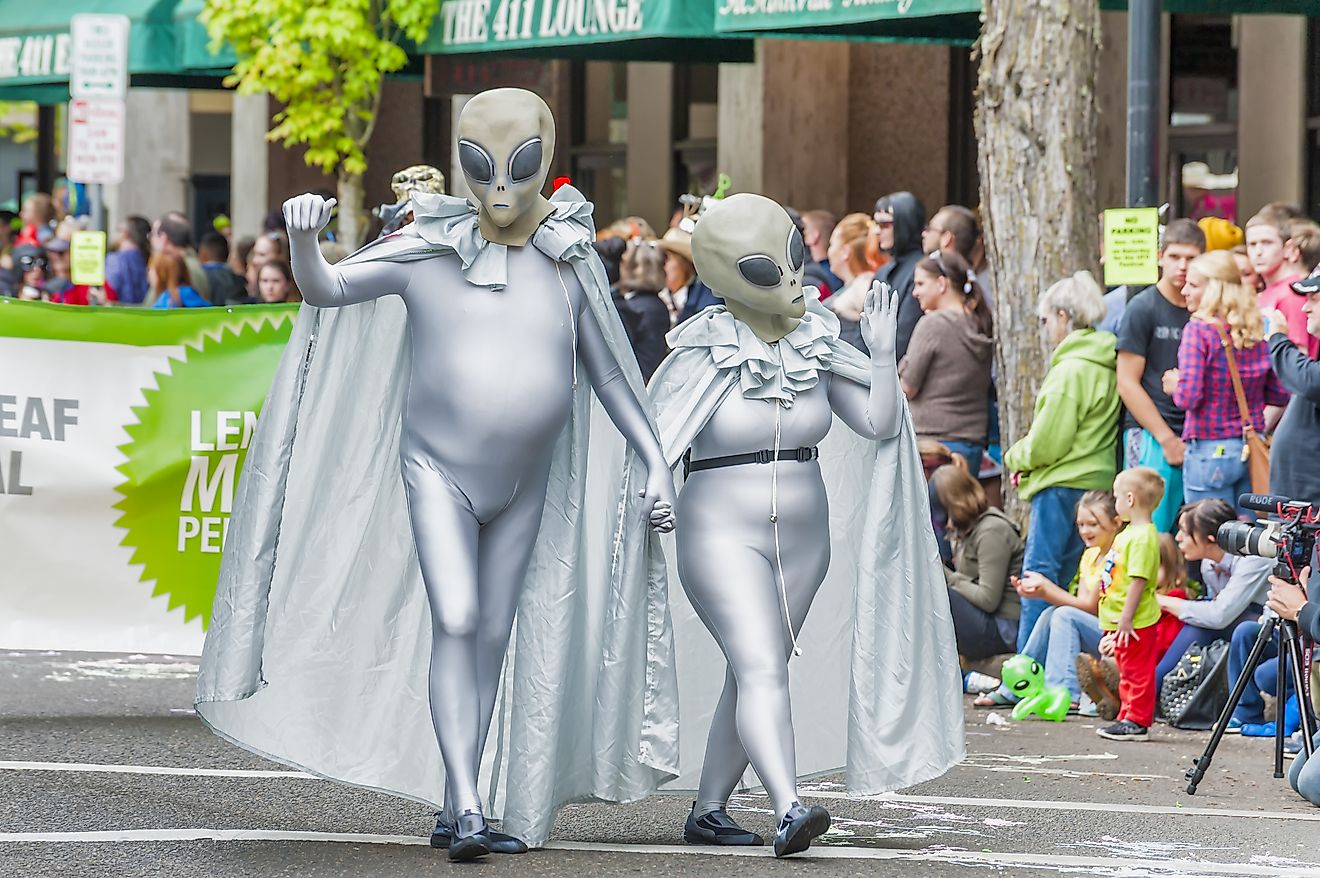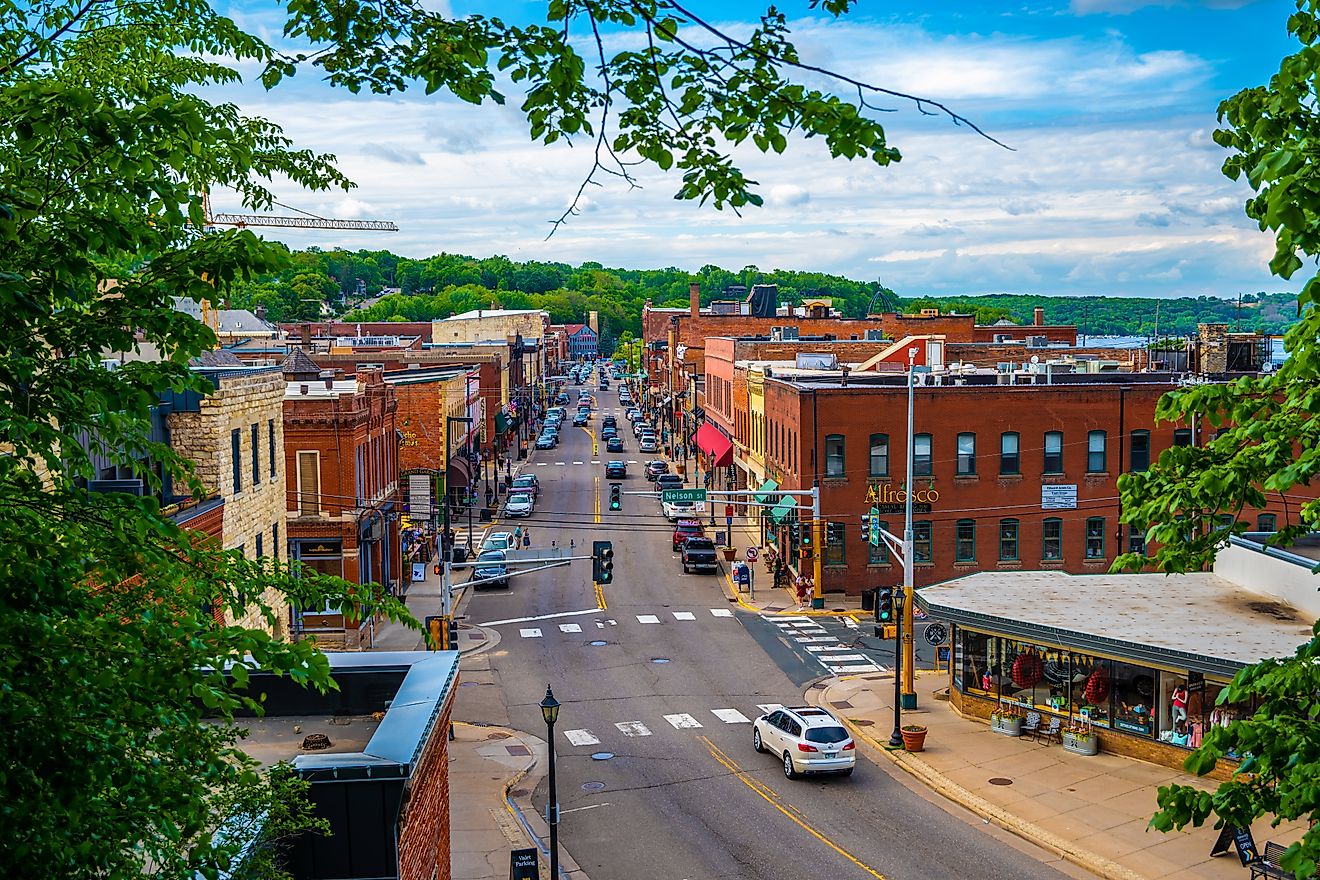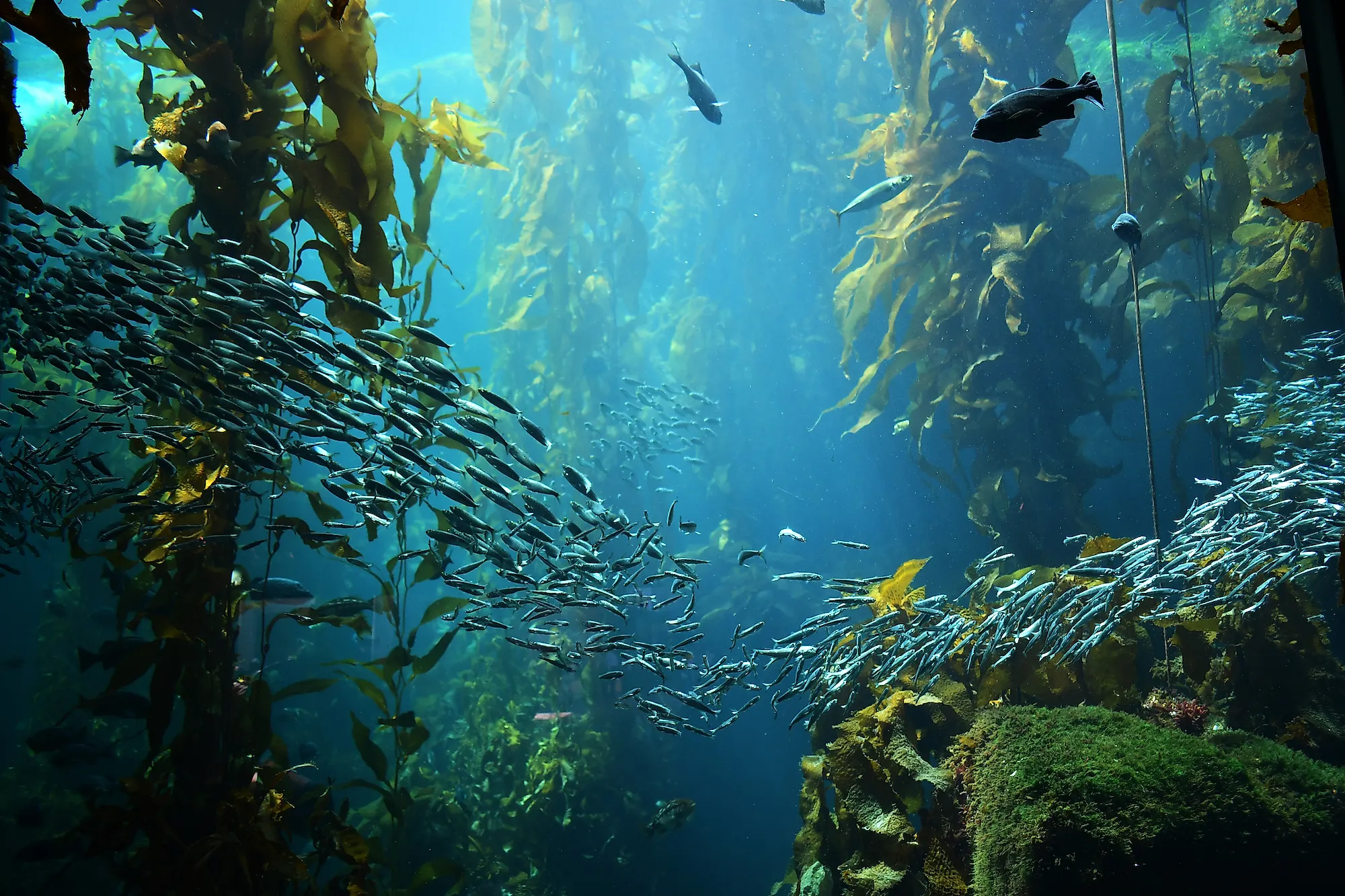
Kelp Forest
Kelp forests are underwater ecosystems fashioned through the dense growth of different species of marine macroalgae. These terrestrial rainforests are spread along temperate coastlines across the world where the waters are shallow and relatively clear to enable the penetration of sunlight for them to generate food and energy. The architecture of kelp forests is based on its physical structure which influences the species that define the community structure. There are three main guilds of kelp namely canopy kelp, stipitate kelps, and prostrate kelps.
Geographic Spread
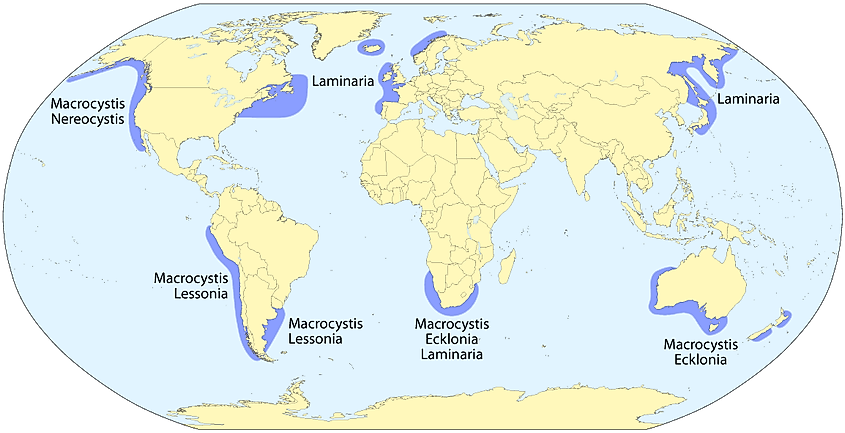
Kelp forests are usually found in arctic and temperate waters across the world. The major species of Laminaria occur in the Atlantic Ocean and the coastlines of China and Japan. The Ecklonia species is found on the coast of, New Zealand, Australia, and Africa while Macrocystis grow in the Pacific Ocean, Southern Ocean archipelagos, and parts of Australia. Due to their complex and sensitive structure, kelps are not common in tropical waters but Laminaria has been located in the deep waters of tropic regions such as the Galapagos Island. The absence of kelps in the tropic regions is the lack of nutrients in the warm oligotrophic waters.
Characteristics Of Kelp Forests
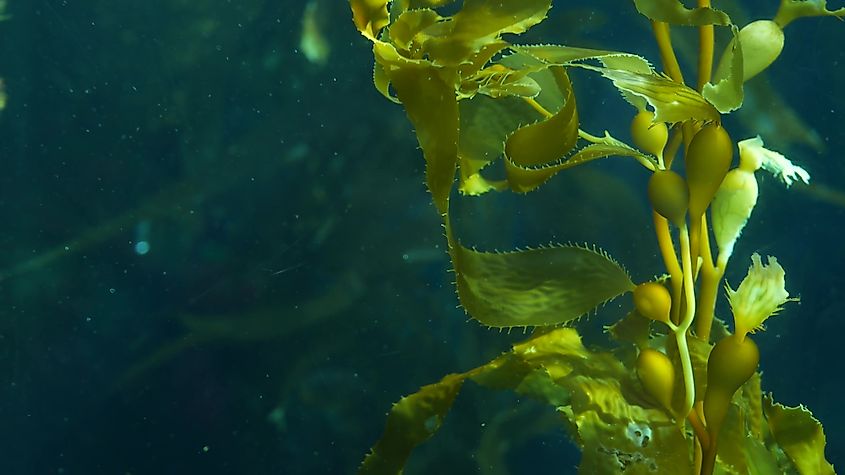
Kelp is the term used to refer to marine algae belonging to the phylum heterokontophyte. It is not taxonomically diverse but is structurally and functionally diverse. The three main guilds of kelp are differentiated by their structural appearance where canopy kelp comprises floating canopies that extend to the ocean surface, stipitate kelps extend a few meters above the seafloor, and can grow in dense aggregations, and prostrate kelps that lie near the seafloor. Although kelps resemble trees, they are large brown algae that belong to the Protista kingdom. They grow up from the ocean floor. Rather than roots as found in trees, kelps have anchors referred to as holdfast that grip onto the rocky substrate on the seafloor. From the holdfast, kelps grow towards the surface of the water with the giant kelp growing perennially while the bull completes its growth cycle within a year.
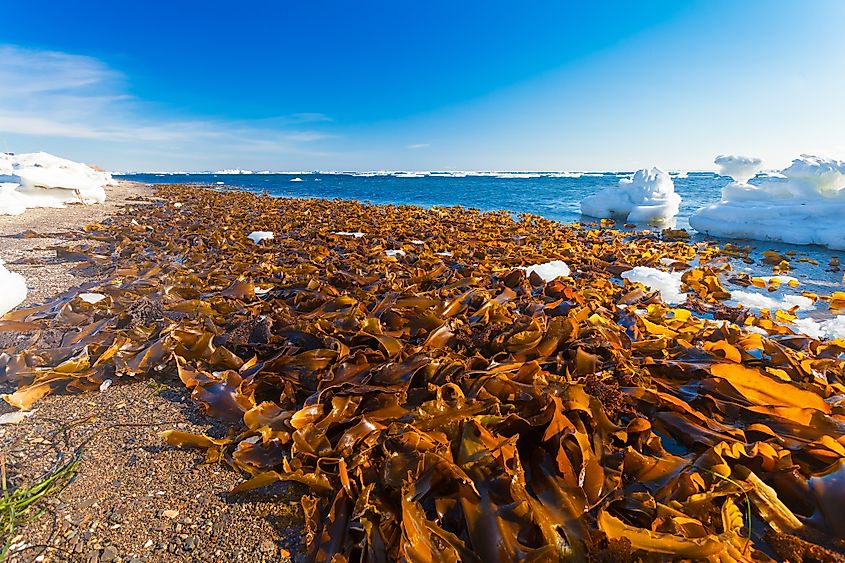
From the holdfast are stipes that resemble stems in true plants and extend vertically to provide support for other morphological features of the kelps. They possess fronds which are leaflike attachments that extend from the stripe in some cases along the full length and are the sites of nutrient uptake and photosynthesis activity. Kelps have gas bladders (pneumocystis) located at the base of the fronds and near the stipe to provide the necessary buoyancy to keep the upper parts of the algae afloat.
Kelps have two stages in their lifecycle where they first exist as spores released by the parent kelps in their earliest stages. The spores grow into tiny male and female gametophytes which produce either eggs or sperms based on their sex. After fertilization, the embryos grow into mature plants, completing their lifecycle. Giant kelps live up to 20 years in their optimal conditions and achieve a growth rate of 10 inches to 2 feet per day while bull kelps are annual and grow by 4 inches per day.
Conditions Required For Growth Of Kelps
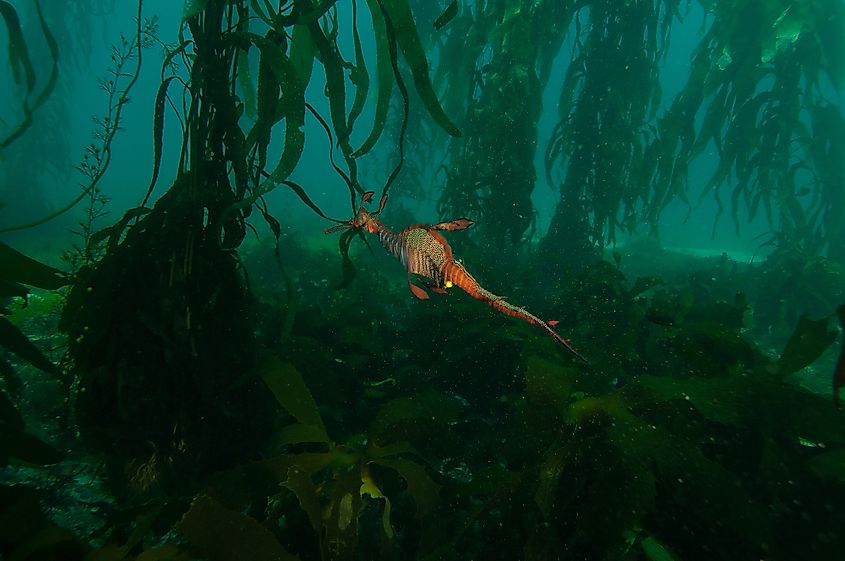
Kelp forests thrive in cold and nutrient-rich waters along rocky coastlines where the depth is 6 to 90 ft deep. The growth of kelps is favored by clear waters where sunlight can reach the ocean floor where the life of the kelps begins. Kelps mostly recruit most successfully in regions where the ocean waters overturn, bringing cool and nutrient-rich waters from the bottom to the surface and regions where there are continuously high-nutrient waters. In warm waters where the temperatures exceed 72 degrees F, Kelp does not grow since the amount of dissolved inorganic nitrogen which supports kelp growth decrease significantly. This phenomenon is particularly evident in southern California where giant kelp forests are destroyed during summer.
The survival of kelp is also dependent on the strength of the substrate. The larger and stronger the rock on which kelp anchor, the higher the survival rate. Kelps are easily destroyed by winter storms and high-energy environments, where they are uprooted and washed ashore. Productive kelp forests are associated with areas of significant oceanographic upwelling which delivers nutrient-rich water from the seafloor to the mixed surface layer of the ocean. Kelps also require rock and sand, high phosphorus and nitrogen nutrients, and light. Water clarity influences the depth of light that can be transmitted to the ocean floor.
Flora And Fauna
Kelp forests provide a habitat for a variety of fish species, marine mammals, birds, and other invertebrates. Each guild of kelps has endemic organisms that will usually vary based on the level of independence within the ecosystems. The most dominant invertebrates in these ecosystems include bristle worms, prawns scud, jellyfish, brittle stars, and sea urchins. Most of these species feed on algae that is in plenty in kelp forests. They also feed on kelp that has been extricated from the substrate drifting to the ocean floor. When there is enough drift kelp on the ocean floor, grazers do not feed on the attached plants. However, when the drift subsidies subside, the herbivorous grazers directly feed on the kelps thus altering the structure of these ecosystems.
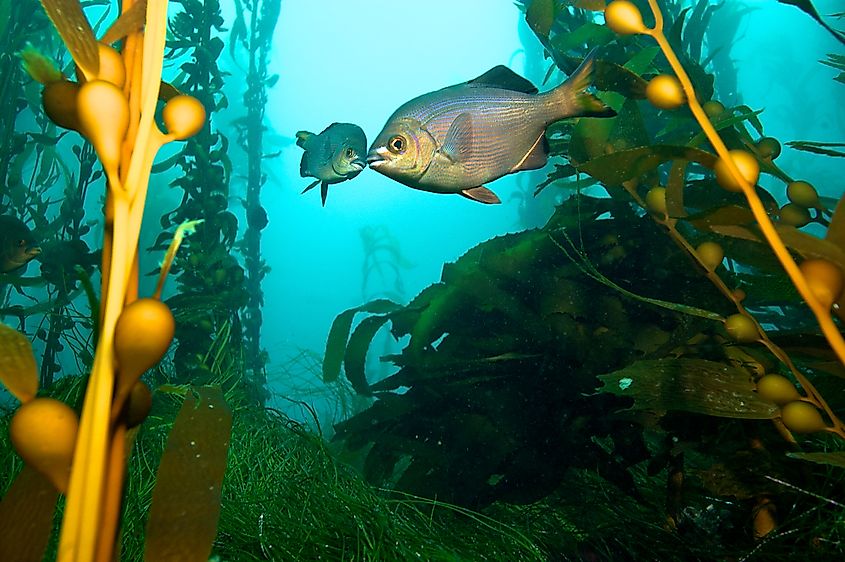
A wide range of fish species inhabit kelp forests including black and blue rockfish and kelp rockfish that are widely sought by fishermen worldwide. Marine mammals including sea lions, seals, and whales inhabit kelp forests for protection from predators like the predatory killer whale. A symbiotic relationship exists amongst the inhabitants of kelp ecosystems as where larger mammals feed on the invertebrates that feed on the kelps. Grey whales feed on crustaceans while sea otters feed on sea urchins that could wipe an entire kelp forest if left to multiply freely. Bat rays are also common along the coastlines of the Pacific Ocean.
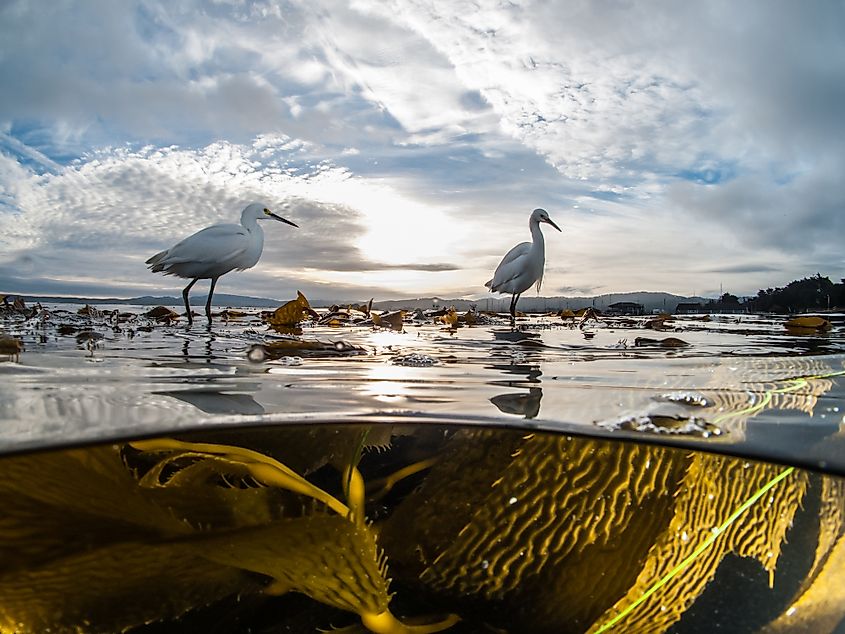
Kelp forests are home to a variety of birds including warblers, crows, and starlings that feed on maggots flies, and small crustaceans. Seagulls, the great blue heron, and terns are dominant in these ecosystems and are often spotted feeding on the different fish species and invertebrates living in the kelp.
Uses Of Kelp Forests
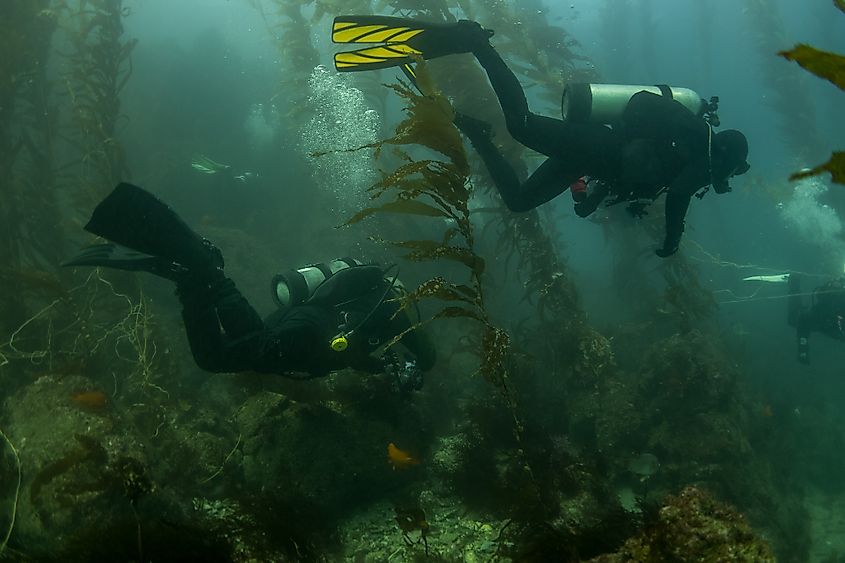
Besides being great biodiversity ecosystems hosting marine flora and fauna, kelp forests play a fundamental role in supporting water recreational activities such as kayaking and scuba diving as they provide a buffer from the rough ocean waters. Kelps played a great role to colonialists in the ancient days as they were able to travels thousands of miles without the need to adapt to new ecosystems. In modern economies, humans continue to harvest kelps to feed aquaculture species and also extract alginic acid used in antiacids and toothpaste.
Threats
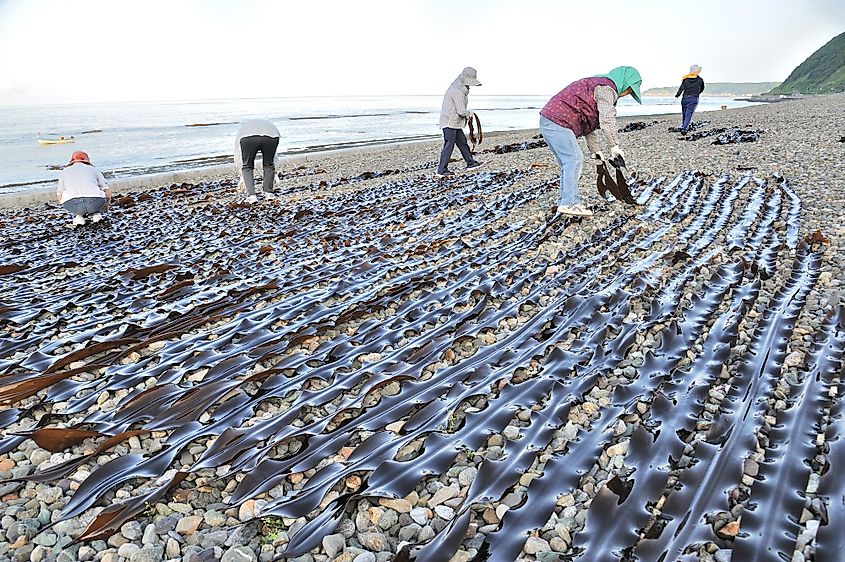
Kelp forests host a diverse range of species, but their survival is at risk due to environmental changes and human activities. The primary threat comes from commercial kelp harvesting, a practice that has persisted for centuries to meet the needs of various industries. During World War I, kelp was collected for potash, which was used in gunpowder and fertilizers. Subsequently, the pharmaceutical industry started extracting algin, a thickening, stabilizing, and gelling agent found in kelp, that serves as an additive in products like salad dressings, shampoos, toothpaste, dairy items, cakes, and frozen meals. Furthermore, mariculture farms harvest kelp to serve as feed for abalone.
Harsh environmental conditions characterized by high energy storms and warm waters uproot and break away and wash kelps offshore. In 1997/98 El Nino storms were the primary source of kelp mortality along the coast of California. In the south of Point Conception, kelp forests sustained total destruction while other marine ecosystems within the same region remained untouched. Researchers claim that the discrepancy between southern and central California to ocean temperature gradients. The El Nino storms brought unusually high ocean temperatures to southern California where the heat degraded the health of the giant kelp forests. The combined warm water temperatures and strong wave energy create harsh conditions for the growth and survival of kelps.
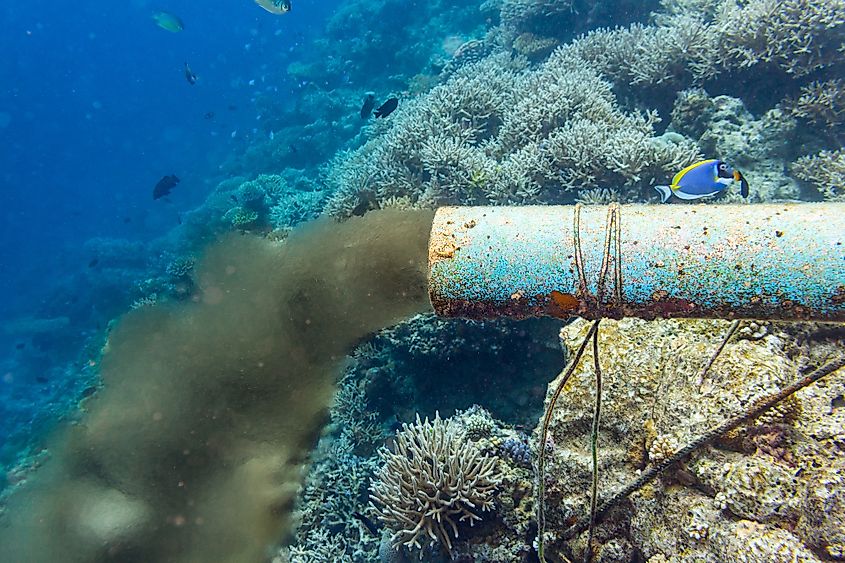
Human activities that result in the release of untreated waste and coastal runoff significantly harm kelp forests. The sediments carried by coastal runoff bury most of the kelp roots, while toxic substances diminish water quality, negatively impacting kelp growth. Invasive opaleye (half-moon) fish, which form large shoals, damage kelps, particularly in areas vulnerable to environmental stress. Nearshore fish harvesting removes herbivores from their natural habitat, allowing them to overgraze on kelps and other algae essential to these ecosystems. Overfishing is the primary factor behind the decline of kelp in Tasmania’s coastline.
Conservation And Management
Ecological monitoring initiatives have been initiated in sanctuaries, designated as marine protected areas, to manage overfishing and shield the kelp ecosystem from additional environmental stress. Many conservation endeavors focus on establishing marine protected areas that encompass target kelp forests and their interactions with the surrounding environment. MPAs effectively foster natural conditions that contribute to the protection and regeneration of kelp forests.
